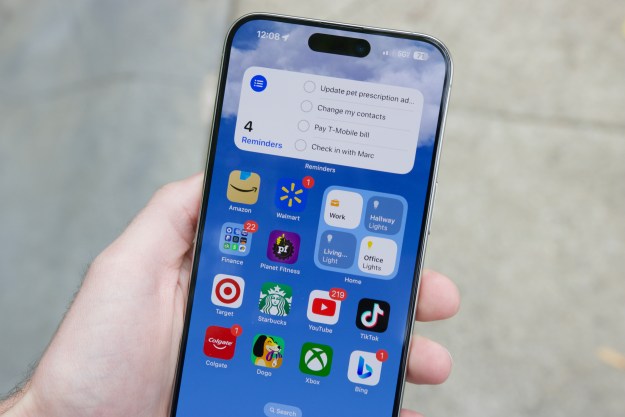Whether you freelance and have always worked from home full time, have found yourself working at home during the pandemic (like 42% of workers across the U.S.), or often take your work home with you — even though you know you shouldn’t — good communication with your work colleagues is vital to feeling like part of the team. From collaborating on projects to presenting ideas and ensuring everybody knows what they need to do and when, the best task management apps help remote teams stay connected and make it easier to manage projects when you can’t get to the office.
There are loads of apps out there to choose from — some great, some not so much. We’ve done the hard graft and chosen five of our favorites to help you stay connected to your colleagues and on track with your tasks, wherever you’re working from.
Working from home alone and prefer to-do list apps that let you tick off your professional and personal tasks in one place? Then check out our pick of the best to-do apps.
Asana
Top of the list — and our own personal favorite app for collaboration and remote working — is Asana. If you haven’t used the app before you’ll be pleased to hear it’s intuitive and easy to find your way around. Although you can use it for working solo, it’s really designed to bring all workflows together, making it easy to schedule goals and projects and see what tasks each specific team member is doing — and when they’re due.
You can sign up with your email or a Google account, and choose from three tiers: The Basic plan is free, then there’s Premium which costs $13 per user, per month, or Business, which will set you back $30 per user per month. The Basic plan is a great way to get started and you’ll get access to the core task management features, but sticking with this limits your team to 1,000 tasks and means you’ll miss out on features like custom fields, forms, timeline view, and dashboards.
One of the best things about Asana is that you can use the app offline to check your notifications, change due dates/assignees, complete tasks on-the-go, and comment on tasks — that, and its ease of use, makes it a top pick.
Trello
Trello is an app that uses the kanban system — basically, that involves a board and cards on the board that represents tasks or ideas. The board will have columns on it, each representing a stage in the work process, such as “To Do” and “Done.” Of all the task management apps on our list, Trello is one of the simplest to use and the most popular. You can sign up via email or with your Google, Microsoft, or Apple account and once you create your first board, you’ll automatically see “To Do,” “Doing,” and “Done” cards — you can easily change the names of these or add your own. Click on a card to edit its description, add labels, collaborate with others, set a due date, attach a checklist of related tasks, or attach files for other team members to see. You can also comment on cards.
The simple, intuitive layout makes it easy to create boards, add tasks, and invite co-workers to collaborate. Trello is completely free to use and with the free version, you can create as many cards as you like, although you’re limited to 10 boards per account and there’s no access to Calendar View — handy for keeping on track of deadlines. You can upgrade to Business Class for $13 per user per month which unlocks features like Dashboard and Calendar View and allows you to create unlimited boards. There’s also an Enterprise version if you need access for more than 100 users.
Monday.com
If you’re looking for a task management app geared specifically toward businesses, Monday.com is a top choice. It makes it easy to keep an eye on the progress of all your tasks, create comprehensive task and to-do lists, communicate with colleagues, and prioritize tasks. There’s a handy in-built chat function to keep your team connected, and a wide range of templates to choose from that make creating your first board easy, from project boards to event planning and daily task trackers.
Monday.com works similarly to Trello, using the kanban system of boards and cards, but the interface can seem confusing at first and it’s likely to take you a bit more time to get to grips with all the app’s features. We find Trello and Asana more intuitive, but your experience might be different.
There’s no free version — though you do get a 14-day free trial — and there are three plans to choose from: Basic, from $10 per user per month, Standard, which costs $12 per user per month, and Pro, which will set you back $20 per user per month. It’s worth noting here that all plans are for a minimum of three users — so if, for example, you have three users on the Basic plan, you’ll be billed $30 per month. You can also sign up for annual billing to save a few dollars. The Basic plan gives you unlimited boards and over 20 column types plus access to templates, but for features like Timeline and Calendar view and time tracking you’ll need to upgrade to Standard or Pro.
Basecamp 3
Whether you used the desktop version back in the day or not, Basecamp 3 remains one of the most popular and powerful collaboration tools out there. The app is based on six core tools that help you to manage tasks and communicate with your team: To-dos, message board, chat room, schedule, documents and files, and automatic check-ins. It’s a great way to get a big-picture view of who’s working on what, what has been completed, and what’s overdue, and can be used for project and non-project work. Handy to-dos ensure that every team member knows what they need to work on and when, and you can set up automatic check-ins to prompt everyone to write up what they’ve worked on a daily, weekly, or monthly basis, holding everyone accountable. The chat room and message boards save you time searching through emails for conversations as everything is organized and in one place.
One of the best things about Basecamp is that it doesn’t charge you based on how many users you add. You can sign up for the free personal plan which caps you at three projects, 20 users, and 1GB of storage, or upgrade to the Business plan for a $99 per month flat rate, for unlimited projects and users and 500GB of storage space. If you’re working with a large team this is likely to save you quite a bit compared to some other task management subscription costs. There’s a 30-day free trial too, so you can see if the Business plan is right for you before upgrading.
Omnifocus 3

The final app on our list is an iOS-only one. Omnifocus 3 syncs between all your Apple devices and is built around the Getting Things Done (GTD) philosophy. It lets you set up three different types of projects depending on your needs, with six main views so you can organize your tasks by tags, projects, due dates, and so on. There’s even Zapier integration so you can connect Omnifocus to your other productivity apps like Slack, Gmail, and Trello, ensuring everything you need to stay organized is in one place. It’s easy to use Siri to add tasks or organize projects when you’re super busy on-the-go, and the handy Forecast feature acts as a daily to-do list, allowing you to see at a glance what’s happening that day.
There are two plans to choose from and we’d recommend starting with the Standard plan. For most people this should give you access to all the features you need, like project creation, attaching documents, calendar integration, and a whole host of other core features. There’s a 14-day free trial after which this plan costs $50 for the standalone iOS version (for iPhone, iPad, and Apple Watch). If you want to subscribe to the cross-platform option which you can use on Mac, iOS, and the web, this costs from $10 per month or $100 for an annually recurring subscription. There’s also the Pro plan which adds features like a customizable sidebar, custom perspectives, and forecast tags, for which you’ll pay $75 for the standalone iOS version.
Editors' Recommendations
- Best refurbished iPhone deals: Get an iPhone 14 for $513
- The most common Skype problems and how to fix them
- 10 iPhone productivity apps you need to download right now
- When will Apple release iOS 18? Here’s what we know
- Everything you need to know about the massive Apple App Store outage
















